










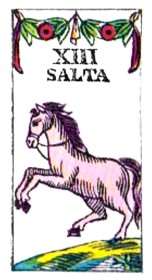



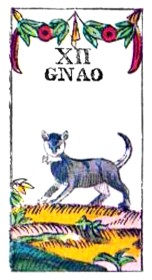












































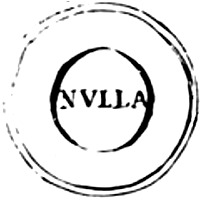


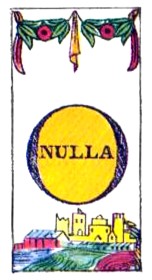



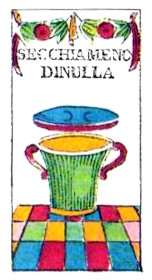



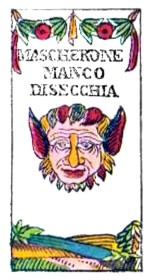
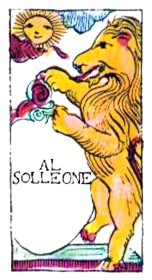



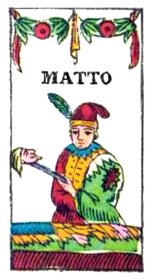
Though there is strong evidence that the South German/Austrian, the
Swedish/Finnish and the Danish/Norwegian branches of this game family
independently derives from an Italian prototype, all these share two
features that are not found in any known Italian variant. This leads to
the awkward postulation of two Italian sub-branches: C1
represented by the surviving sets and C2
which does not have any
surviving instances, but can be reconstructed based on similarities
between its descendants outside Italy. The relation between these is
unclear, it is not even clear which one is the earliest.
The first peculiarity of the C1
branch is that the number
cards only go to ten, unlike in all other branches where they go to
twelve. The matadors (the term for trumps or cards beating the numerals
in Gnav) are sometimes also numbered, extending the number cards with
values from 11 to 15. This leads to the second peculiarity, that – at
least in the explicitly numbered versions – the horse outranks the cat,
unlike in all other branches.
The C1
branch also occurs both as playing cards and as wooden
pawns with a circular emblem stuck to the underside. As this feature is
shared with Gnav, it must also have been present in C2
; even
though Vogelspiel and Kille both only appear as cards, and Slabberjan
only as pawns. The latter presumably derives from an early version of
Gnav though, and not directly from C2
.
The numeral card zero
is in most sets written as the letter
O
with the word nulla
inside. In some the letter is
replaced with a wreath, and in some of these the word is placed below
instead, as in other cards with titles. This latter form seems to be the
inspiration for the corresponding Kille card.
Early decks had two copies of 19 unique subjects, and all non-Italian decks are based on this set. Some later sets adds a 20th card, seemingly developed from an elaborate title card showing a standing lion, but took the position as the lowest card except Matto. In some decks the same position was filled by a picture of a defecating man.